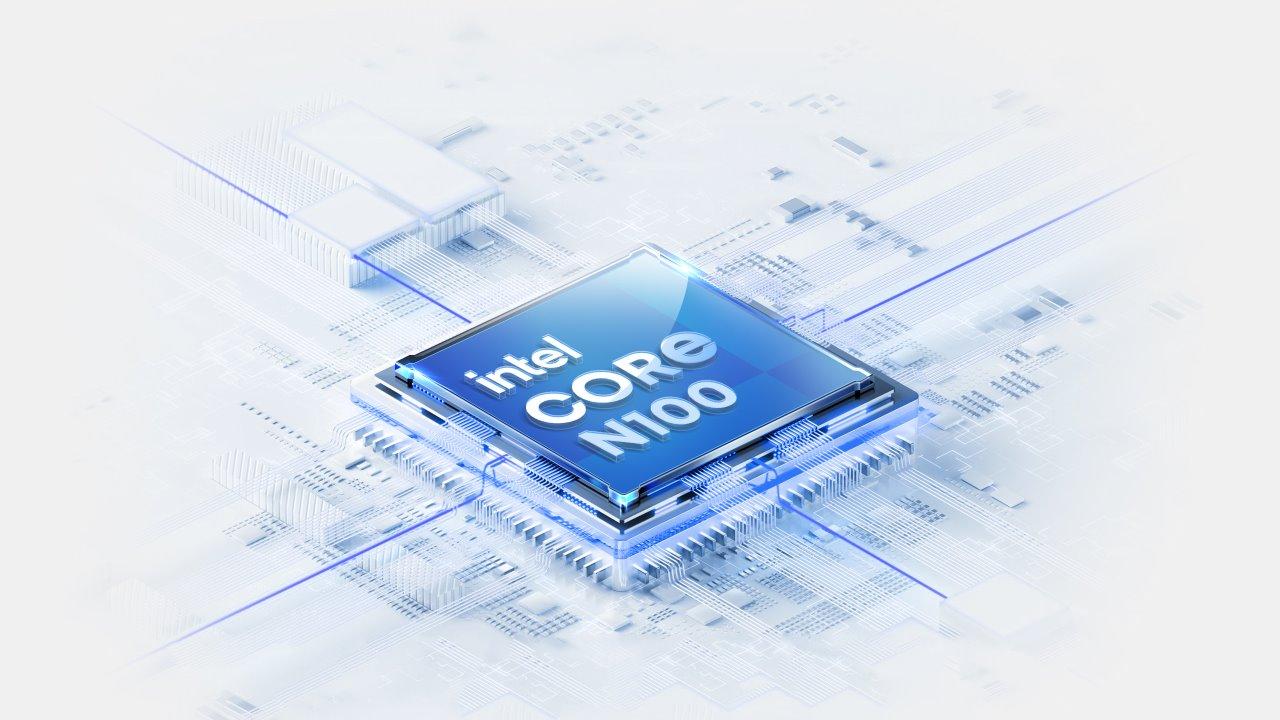We know the family of Intel Core processors, the most popular with video game fans. Recently, with the Alder Lake architecture, the Intel N processors have arrived. These are very low power and high performance solutions designed for Mini PCs, mainly. We may also see them in low-end low-power laptops and other solutions, such as tablets.
To a certain extent, the idea is a bit to compete with AMD’s APUs, something quite complicated. Not at the level of processing power, but at the level of the graphics card. This is an aspect in which Intel is far behind its main competitor.
This is how the Intel N100 processor works
First of all, you have to know a little more about this entry-level processor. The Intel N100 is characterized by having 4 cores and 4 threads work at a fixed frequency of 3.4GHz. Specifically, we are talking about the Gracemont E-Cores architecture, which is why it has a TDP of only 6 watts.
This processor is complemented by aBuilt-in 24 Execution Unit (EU) graph running at 750 MHz. This graph is not very powerful, but it allows us to easily play 4K @ 60 FPS videos. It supports AV1 decoding, which is very intense, but it does not support AV1 encoding.
The processor is in no way designed to run games. The guys from Team Pandora don’t care, who in a video show how well this processor performs in games.
The tests are based on the games: Genshin Impact, Dota 2, Grid Autosport, GTA V, Minecraft, Resident Evil 5, Skyrim, Sleeping Dogs, CS:GO and Forza Horizon 4. To run them, they had to do it on 720p resolution and most of settings Put them at least.
To say that these games have gone to a average 20-30 FPS which, for this very discreet graphics, is already a success. stands resident evil 5 that I arrive at 70 frames per second there Dota 2 who has been around 40 FPS.
Obviously, the resolution is very low and the FPS rate more than correct. The striking thing about this processor is that it can move games.
Can Intel compete with AMD solutions?
AMD APUs with the Vega graphics architecture were, well, a good solution. Currently, the newer ones already have RDNA 2 and RDNA 3 graphics, which offer more power than the predecessors.
Currently, it is very difficult for Intel to compete with these embedded solutions, in particular because of AMD’s experience. Historically, UHD Graphics did little more than display an image. That now a very low end can move games, even at 720p @ 30 FPS is already a big step forward.
Although they have more powerful solutions, they are far from an alternative in terms of discrete games. It is necessary to be able to run games like CS:GO, Minecraft, Fortnite or Dota 2, among others, in 1080p @ 30-60 FPS. When that time comes (which is very close), we will see competition for a bigger segment than we think.








